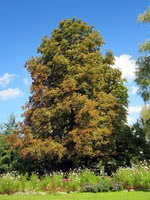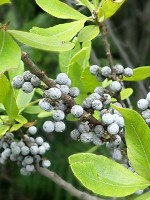Mon-Fri 9am - 5pm Mountain time
Horse Chestnut vs Northern Bayberry
Aesculus hippocastanum
Myrica pensylvanica
CUSTOM GROW
NOT AVAILABLE THIS SEASON - MIGHT RETURN
Horse Chestnut is a medium sized deciduous tree that is native to Greece but has been grown in North America for hundreds of years. It produces large nuts.
A top CO2 absorbing species. Experts think this tree may help climate change more than others.
Northern Bayberry makes an excellent hedge or feature shrub. It will retain its leaves in warmer climates but drops them in colder areas. They produce blue-grey berries that have a wax coating on them that can be used to make candles or soaps.
In colder hardiness zones the leaves turn an attractive orange to red colour in the fall, making it a striking addition to your landscape.
Northern Bayberry is native to Nova Scotia and tolerates both drought and wet conditions. It is also a nitrogen fixer that tolerates poor soil conditions.
Horse Chestnut Quick Facts
Northern Bayberry Quick Facts
Toxicity: most parts of plant are toxic
Toxicity: Warning: The wax from bayberry fruit is considered toxic and may be carcinogenic.

